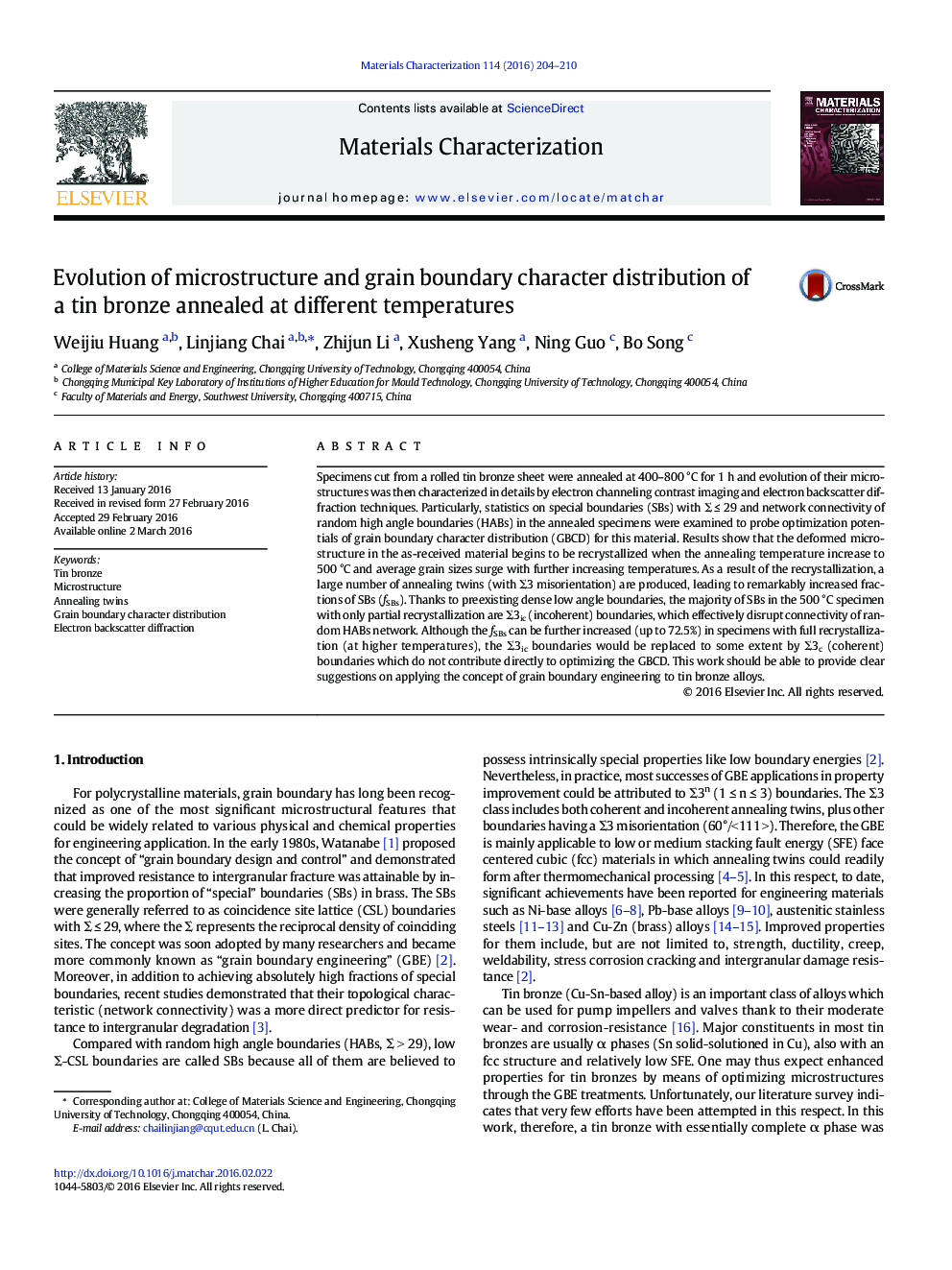| Article ID | Journal | Published Year | Pages | File Type |
|---|---|---|---|---|
| 7969880 | Materials Characterization | 2016 | 7 Pages |
Abstract
Specimens cut from a rolled tin bronze sheet were annealed at 400-800 °C for 1 h and evolution of their microstructures was then characterized in details by electron channeling contrast imaging and electron backscatter diffraction techniques. Particularly, statistics on special boundaries (SBs) with Σ â¤Â 29 and network connectivity of random high angle boundaries (HABs) in the annealed specimens were examined to probe optimization potentials of grain boundary character distribution (GBCD) for this material. Results show that the deformed microstructure in the as-received material begins to be recrystallized when the annealing temperature increase to 500 °C and average grain sizes surge with further increasing temperatures. As a result of the recrystallization, a large number of annealing twins (with Σ3 misorientation) are produced, leading to remarkably increased fractions of SBs (fSBs). Thanks to preexisting dense low angle boundaries, the majority of SBs in the 500 °C specimen with only partial recrystallization are Σ3ic (incoherent) boundaries, which effectively disrupt connectivity of random HABs network. Although the fSBs can be further increased (up to 72.5%) in specimens with full recrystallization (at higher temperatures), the Σ3ic boundaries would be replaced to some extent by Σ3c (coherent) boundaries which do not contribute directly to optimizing the GBCD. This work should be able to provide clear suggestions on applying the concept of grain boundary engineering to tin bronze alloys.
Keywords
Related Topics
Physical Sciences and Engineering
Materials Science
Materials Science (General)
Authors
Weijiu Huang, Linjiang Chai, Zhijun Li, Xusheng Yang, Ning Guo, Bo Song,
